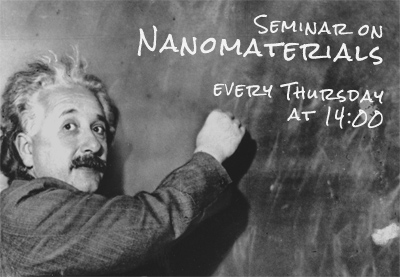Nanoseminar
Group of Structure analysis at the Department of Condensed Matter Physics
of Charles University and MGML has a pleasure to invite you to attend the seminar on nanomaterials: Physics, Technology, Applications
on 9th March 2023 at 14:00
at Faculty of Mathematics and Physics of Charles University, Ke Karlovu 5, 121 16 Praha 2
Lecture room F2
Ashwin Suresh
Institute of Physics, CAS
Charge density analysis from 3D ED data
Ashwin Suresh » Charge density analysis from 3D ED data
Electron crystallography has garnered great interest in the last two decades with the advent of three-dimensional electron diffraction (3D ED) data acquisition and processing techniques.1 Electron diffraction provides information about the effects of bonding on the electrostatic potential since electron scattering is more sensitive to fine details in the electron density distribution compared to X-ray scattering.2 To extract the information on bonding effects, very accurate data collection and data processing workflows need to be developed.
Most methods used to determine the crystal structures rely on a simple model called the ‘Independent Atom Model’ (IAM), which assumes the crystal to be an assembly of non-interacting atoms.3 Thus using the IAM model, we will observe accumulations of nonmodelled ED on covalent bonds (where they are found shared by the bonded atoms), or at expected positions of electron lone pairs. Thus the refined positional and thermal atomic parameters, in this case, maybe necessarily biased by the non-modelled aspherical distribution of the valence ED.4 The objective of properly modelling the fine electron density details, and at the same time properly de-convoluting atomic displacements parameters and deformation ED features, can only be achieved using a more adequate atomic model than the crude spherical approximation of the IAM approach.
In the seminar, I will try to summarize the basics of the method, present some of the results of our charge density analysis studies from 3D ED data and also the shortcomings that need to be addressed to improve a successful charge density study.
*corresponding author: e-mail: ashwinsuresh650@gmail.com
References
[1] Gemmi et al. (2019) ACS Cent. Sci. 5, p. 1315.
[2] Zheng et al. (2004) J. of Applied Cryst. 38 (4) p. 648
[3] Grabowsky S. (2021) De Gruyter, Complementary Bonding Analysis.
[4] Coppens P. (1997) Oxford Univ. Press, X-Ray Charge Densities and Chemical Bonding.
[5] Kulik, M., & Dominiak, P. M. (2022). Computational and Structural Biotechnology Journal, Electron density is not spherical: the many applications of the transferable aspherical atom model.


